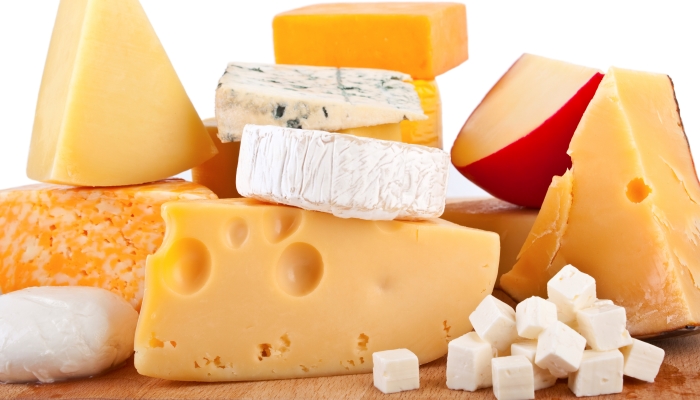
Cheese is a generic term for a diverse group of milk-based food products. Cheese is produced throughout the world in wide-rangingflavors, textures, and forms. Cheese consists of proteins and fat from milk, usually the milk of cows, buffalo, goats, or sheep.
It is produced by coagulation of the milk protein casein. Typically, the milk is acidified and addition of the enzyme rennet causes coagulation. The solids are separated and pressed into final form. Some cheeses have molds on the rind or throughout. Most cheeses melt at cooking temperature.
Hundreds of types of cheese are produced. Their styles, textures and flavors depend on the origin of the milk (including the animal's diet), whether they have been pasteurized, the butterfat content, the bacteria and mold, the processing, and aging. Herbs, spices, or wood smoke may be used as flavoring agents. The yellow to red color of many cheeses is from adding annatto.
For a few cheeses, the milk is curdled by adding acids such as vinegar or lemon juice. Most cheeses are acidified to a lesser degree by bacteria, which turn milk sugars into lactic acid, then the addition of rennet completes the curdling. Vegetarian alternatives to rennet are available; most are produced by fermentation of the fungus Mucor miehei, but others have been extracted from various species of the Cynara thistle family.
Cheese is valued for its portability, long life, and high content of fat, protein, calcium, and phosphorus. Cheese is more compact and has a longer shelf life than milk. Cheesemakers near a dairy region may benefit from fresher, lower-priced milk, and lower shipping costs. The long storage life of some cheese, especially if it is encased in a protective rind, allows selling when markets are favorable.
History
Cheese is an ancient food whose origins predate recorded history. There is no conclusive evidence indicating where cheesemaking originated, either in Europe, Central Asia or the Middle East, but the practice had spread within Europe prior to Roman times and, according to Pliny the Elder, had become a sophisticated enterprise by the time the Roman Empire came into being. Proposed dates for the origin of cheesemaking range from around 8000 BCE (when sheep were first domesticated) to around 3000 BCE. The first cheese may have been made by people in the Middle East or by nomadic Turkic tribes in Central Asia. Since animal skins and inflated internal organs have, since ancient times, provided storage vessels for a range of foodstuffs, it is probable that the process of cheese making was discovered accidentally by storing milk in a container made from the stomach of an animal, resulting in the milk being turned to curd and whey by the rennet from the stomach. There is a legend with variations about the discovery of cheese by an Arab trader who used this method of storing milk.
Proposed dates for the origin of cheesemaking range from around 8000 BCE (when sheep were first domesticated) to around 3000 BCE. The first cheese may have been made by people in the Middle East or by nomadic Turkic tribes in Central Asia. Since animal skins and inflated internal organs have, since ancient times, provided storage vessels for a range of foodstuffs, it is probable that the process of cheese making was discovered accidentally by storing milk in a container made from the stomach of an animal, resulting in the milk being turned to curd and whey by the rennet from the stomach. There is a legend with variations about the discovery of cheese by an Arab trader who used this method of storing milk.
Cheesemaking may have begun independently of this by the pressing and salting of curdled milk to preserve it. Observation that the effect of making milk in an animal stomach gave more solid and better-textured curds, may have led to the deliberate addition of rennet.
The earliest archeological evidence of cheesemaking has been found in Egyptian tomb murals, dating to about 2000 BCE. The earliest cheeses were likely to have been quite sour and salty, similar in texture to rustic cottage cheese or feta, a crumbly, flavorful Greek cheese.
Cheese produced in Europe, where climates are cooler than the Middle East, required less salt for preservation. With less salt and acidity, the cheese became a suitable environment for useful microbes and molds, giving aged cheeses their pronounced and interesting flavors.
Making cheese
Curdling
A required step in cheesemaking is separating the milk into solid curds and liquid whey. Usually this is done by acidifying (souring) the milk and adding rennet. The acidification can be accomplished directly by the addition of an acid like vinegar in a few cases (paneer, queso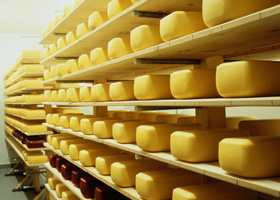 fresco), but usually starter bacteria are employed instead. These starter bacteria convert milk sugars into lactic acid. The same bacteria (and the enzymes they produce) also play a large role in the eventual flavor of aged cheeses. Most cheeses are made with starter bacteria from the Lactococci, Lactobacilli, or Streptococci families. Swiss starter cultures also include Propionibacter shermani, which produces carbon dioxide gas bubbles during aging, giving Swiss cheese or Emmental its holes.
fresco), but usually starter bacteria are employed instead. These starter bacteria convert milk sugars into lactic acid. The same bacteria (and the enzymes they produce) also play a large role in the eventual flavor of aged cheeses. Most cheeses are made with starter bacteria from the Lactococci, Lactobacilli, or Streptococci families. Swiss starter cultures also include Propionibacter shermani, which produces carbon dioxide gas bubbles during aging, giving Swiss cheese or Emmental its holes.
Some fresh cheeses are curdled only by acidity, but most cheeses also use rennet. Rennet sets the cheese into a strong and rubbery gel compared to the fragile curds produced by acidic coagulation alone. It also allows curdling at a lower acidity—important because flavor-making bacteria are inhibited in high-acidity environments. In general, softer, smaller, fresher cheeses are curdled with a greater proportion of acid to rennet than harder, larger, longer-aged varieties.
Curd processing
At this point, the cheese has set into a very moist gel. Some soft cheeses are now essentially complete: they are drained, salted, and packaged. For most of the rest, the curd is cut into small cubes. This allows water to drain from the individual pieces of curd.
Some hard cheeses are then heated to temperatures in the range of 35–55 °C (95–131 °F). This forces more whey from the cut curd. It also changes the taste of the finished cheese, affecting both the bacterial culture and the milk chemistry. Cheeses that are heated to the higher temperatures are usually made with thermophilic starter bacteria that survive this step—either lactobacilli or streptococci.
Salt has roles in cheese besides adding a salty flavor. It preserves cheese from spoiling, draws moisture from the curd, and firms cheese’s texture in an interaction with its proteins. Some cheeses are salted from the outside with dry salt or brine washes. Most cheeses have the salt mixed directly into the curds.
Other techniques influence a cheese's texture and flavor. Some examples:
Stretching: (Mozzarella, Provolone) The curd is stretched and kneaded in hot water, developing a stringy, fibrous body.
Cheddaring: (Cheddar, other English cheeses) The cut curd is repeatedly piled up, pushing more moisture away. The curd is also mixed (or milled) for a long time, taking the sharp edges off the cut curd pieces and influencing the final product's texture.
Washing: (Edam, Gouda, Colby) The curd is washed in warm water, lowering its acidity and making for a milder-tasting cheese.
Most cheeses achieve their final shape when the curds are pressed into a mold or form. The harder the cheese, the more pressure is applied. The pressure drives out moisture—the molds are designed to allow water to escape—and unifies the curds into a single solid body.
Aging
A newborn cheese is usually salty yet bland in flavor and, for harder varieties, rubbery in texture. These qualities are sometimes enjoyed—cheese curds are eaten on their own—but normally cheeses are left to rest under controlled conditions. This aging period (also called ripening, or, from the French, affinage) lasts from a few days to several years. As a cheese ages, microbes and enzymes transform texture and intensify flavor. This transformation is largely a result of the breakdown of casein proteins and milkfat into a complex mix of amino acids, amines, and fatty acids.
Some cheeses have additional bacteria or molds intentionally introduced before or during aging. In traditional cheesemaking, these microbes might be already present in the aging room; they are simply allowed to settle and grow on the stored cheeses. More often today, prepared cultures are used, giving more consistent results and putting fewer constraints on the environment where the cheese ages. These cheeses include soft ripened cheeses such as Brie and Camembert, blue cheeses such as Roquefort, Stilton, Gorgonzola, and rind-washed cheeses such as Limburger.
There are hundreds of different types of cheese that can be differentiated both by the type of milk - raw, skimmed or pasteurised, and by the animal - cow, goat, sheep, buffalo, horse or camel.
Serving and Storage Tips
>Unpasteurised cheese with a range of flavours should not be sliced until purchase otherwise it will start to lose its subtlety and aroma.
Keep the cheese in conditions in which it matures. Hard, semi-hard and semi-soft cheeses are stored in the temperatures from around 8 - 13 C.
Keep the cheese wrapped in the waxed paper and place it in a loose-fitting food-bag not to lose humidity and maintain the circulation of air.
Wrap blue cheeses all over as mould spores spread readily not only to other cheeses but also to everything near.
Chilled cheeses should be taken out of the refrigerator one and a half or two hours before serving.
Cheeses contain living organisms that must not be cut off from air, yet it is important not to let a cheese dry out.
Do not store cheese with other strong-smelling foods. As a cheese breathes it will absorb other aromas and may spoil.
Wrap soft cheeses loosely. Use waxed or greaseproof paper rather than cling film.
Let cold cheese warm up for about half an hour before eating to allow the flavour and aroma to develop.
Which cheese?
Cheese is usually made from cow's milk, or sheep's milk. The milk is heated with the enzyme renin (rennet) to separate the curds, which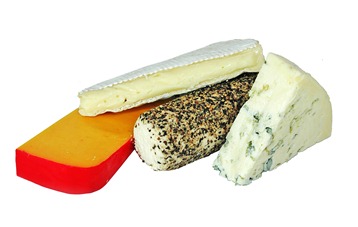 are collected and pressed, then salted and left to ripen or mature - this develops the flavour and texture of the cheese. The longer a cheese is ripened, the harder the texture and the stronger the flavour. Since cheese is made from milk, they are similar in nutritive value. However, many cheeses are high in sodium and fat. Cheese that are made from lower fat milk be added. The more water a cheese contains, the lower its percentage of fat milk be. The calorie, fat, and calcium content of some popular cheese are shown below:
are collected and pressed, then salted and left to ripen or mature - this develops the flavour and texture of the cheese. The longer a cheese is ripened, the harder the texture and the stronger the flavour. Since cheese is made from milk, they are similar in nutritive value. However, many cheeses are high in sodium and fat. Cheese that are made from lower fat milk be added. The more water a cheese contains, the lower its percentage of fat milk be. The calorie, fat, and calcium content of some popular cheese are shown below:
| CHEESE 28g/1oz | CALORIES | TOTAL FAT | SATURATED FAT | CALCIUM |
| Cheddar | 116 | 9.2g | 6.1g | 207mg |
| Roquefort | 105 | 9.2g | 5.9g | 148mg |
| Parmesan | 111 | 7.3g | 4.7g | 287mg |
| Brie | 96 | 7.5g | 5.1g | 72mg |
| Goat's (soft) | 90 | 7.2g | 5.0g | 37mg |
| Camembert | 81 | 6.4g | 4.0g | 66mg |
| Mozzarella | 80 | 6.1g | 3.7g | 101mg |
| Feta | 70 | 5.7g | 3.8g | 101mg |
| Ricotta | 40 | 3.1g | 1.9g | 67mg |
Health and nutrition
In general, cheese supplies a great deal of calcium, protein, phosphorus and fat. A 30-gram (1.1 oz) serving of Cheddar cheese contains about 7 grams (0.25 oz) of protein and 200 milligrams of calcium. Nutritionally, cheese is essentially concentrated milk: it takes about 200 grams (7.1 oz) of milk to provide that much protein, and 150 grams (5.3 oz) to equal the calcium.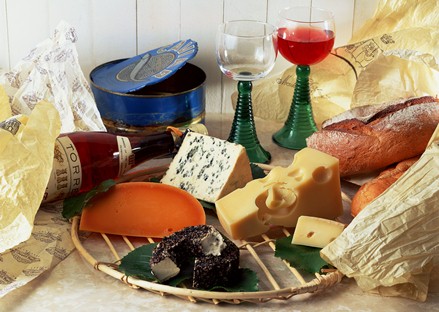 Cheese potentially shares other nutritional properties of milk. The Center for Science in the Public Interest describes cheese as America's number one source of saturated fat, adding that the average American ate 30 lb (14 kg) of cheese in the year 2000, up from 11 lb (5 kg) in 1970. Their recommendation is to limit full-fat cheese consumption to 2 oz (57 g) a week. Whether cheese's highly saturated fat actually leads to an increased risk of heart disease is called into question when considering France and Greece, which lead the world in cheese eating (more than 14 oz/400 g a week per person, or over 45 lb/20 kg a year) yet have relatively low rates of heart disease. This seeming discrepancy is called the French paradox; the higher rates of consumption of red wine in these countries is often invoked as at least a partial explanation.
Cheese potentially shares other nutritional properties of milk. The Center for Science in the Public Interest describes cheese as America's number one source of saturated fat, adding that the average American ate 30 lb (14 kg) of cheese in the year 2000, up from 11 lb (5 kg) in 1970. Their recommendation is to limit full-fat cheese consumption to 2 oz (57 g) a week. Whether cheese's highly saturated fat actually leads to an increased risk of heart disease is called into question when considering France and Greece, which lead the world in cheese eating (more than 14 oz/400 g a week per person, or over 45 lb/20 kg a year) yet have relatively low rates of heart disease. This seeming discrepancy is called the French paradox; the higher rates of consumption of red wine in these countries is often invoked as at least a partial explanation.
Some studies claim that cheddar, mozzarella, Swiss and American cheeses can help to prevent tooth decay. Several mechanisms for this protection have been proposed:
The calcium, protein, and phosphorus in cheese may act to protect tooth enamel.
Cheese increases saliva flow, washing away acids and sugars.
Nutrients
When eaten with portion-control and serving size in mind (one serving of cheese is about 30 to 40 grams) cheese can play a delicious role in a well-balanced diet. High levels of the following vitamins, minerals, and nutrients are found in cheese:
Vitamin A: Also found in green and yellow vegetables, egg yolks and fish-liver oil, vitamin A is essential to bone growth and vision. It plays a vital role in cell division and helps boost the immune system.
Vitamin B-12: Like other B vitamins, B-12 is important for metabolism and DNA production. It also helps maintain healthy red blood cells and nerve cells. In addition to dairy products, the vitamin can be found in meat, poultry, and shellfish.
Vitamin D: Essential for the absorption of calcium, vitamin D assists in the production and maintenance of strong teeth and bones. Other sources include fish, oysters, and fortified cereals and milks.
Protein: Found in meat and animal products, protein is an essential building block for all living organisms. It is contained by every cell in the body and maintains important tissues, muscles, tendons, and ligaments. Protein is required for healthy growth and development and is especially important for children and teens.
Phosphorus: This mineral works with protein to grow, maintain, and repair cells and body tissues. About 85% of the body’s phosphorus is found in the bones and teeth. It also assists with proper functioning of the muscles, kidneys, nerves, and heart.
Calcium: An essential constituent of healthy bones, muscles, and teeth, this mineral is important for the growth and maintenance of the entire body. Adequate amounts of calcium are required at all stages of life, but particularly for children. Calcium is also responsible for many body functions, including muscle contractions, nerve impulses, and normal heartbeat. Dairy products like cheese, yogurt, and buttermilk offer the most significant source.
Healthy Teeth
The high levels of phosphorus and calcium in cheese seem to especially be of benefit when it comes to our teeth. A British Nutrition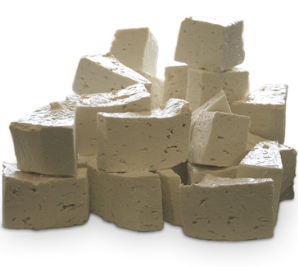 Foundation report has concluded that eating cheese after a meal or sugary snack can help protect against tooth decay and even restore some of the minerals in our tooth enamel. According the study, cheeses like Mozzarella, Cheddar, American, and Swiss have an antibacterial effect in the mouth. They help neutralize and wash away the acid on teeth, and also prevent sugar on enamel from turning into tooth-damaging bacteria.
Foundation report has concluded that eating cheese after a meal or sugary snack can help protect against tooth decay and even restore some of the minerals in our tooth enamel. According the study, cheeses like Mozzarella, Cheddar, American, and Swiss have an antibacterial effect in the mouth. They help neutralize and wash away the acid on teeth, and also prevent sugar on enamel from turning into tooth-damaging bacteria.
Strong Bones
In addition to strengthening teeth, cheese can play a role in staving off osteoporosis, a debilitating condition in which bones become so porous and fragile that they easily fracture or break. In the UK, one in three women and one in eight men over the age of 50 suffers from osteoporosis. But eating just one 30-gram serving of Cheddar (about the size of a matchbox) each day provides 216 mg of calcium, significantly helping you reach the recommended daily levels of calcium to prevent it. The UK Food Standards Agency currently recommends 1000 mg of calcium per day for adults 19 to 70, and 1200 mg per day for those over 70.
Special Concerns
Food safety agencies worldwide have issued warnings about the health risks of consuming raw-milk cheeses. That is because these soft, 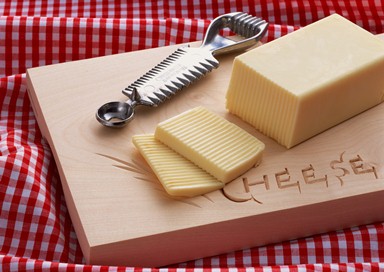 unpasteurized varieties are more likely to grow infectious bacteria such as listeria, salmonella, and tuberculosis. In Australia there is a wide ban on raw-milk cheeses, and in the U.S., they are required by law to be aged at least 60 days. In Europe, raw-milk cheeses are still legal in some countries, and many people say the health concerns about raw-milk cheeses are overblown.
unpasteurized varieties are more likely to grow infectious bacteria such as listeria, salmonella, and tuberculosis. In Australia there is a wide ban on raw-milk cheeses, and in the U.S., they are required by law to be aged at least 60 days. In Europe, raw-milk cheeses are still legal in some countries, and many people say the health concerns about raw-milk cheeses are overblown.
Indeed, infections like listeria are very rare, but if you have a compromised immune system or are pregnant, it is advised that certain cheeses be avoided. Simply stay away from raw, unpastuerised goat and sheep’s milk cheeses (Chabichou, Pyramide), mould-ripened soft cheeses (Brie, Camembert) and blue-veined cheeses (Roquefort, Stilton) and enjoy pasteurized, hard-ripened, or soft-processed varieties instead. Favorites like Gloucester, Havarti, Gouda, Lancashire, Mozzarella, Parmesan, Boursin, Mascarpone, and Ricotta are all deliciously safe to eat.
Lactose Intolerant
People suffering from lactose intolerance often avoid cheese and other dairy products at all costs. But the good news is, some of your favorite cheeses can be enjoyed without worry. Aged cheeses have almost no lactose, and ripened cheeses like Cheddar and Swiss naturally contain very little. In fact, Cheddar has just 5% of the lactose found in whole milk. So go ahead and enjoy a slice – health benefits and all!
Storing
For firm and semi-firm cheeses, wrap them airtight in plastic or foil. Most will keep for several weeks. For longer storage, you can wrap the cheese in a paper towel dampened with cider vinegar and store it inside a sealed plastic bag. This will help inhibit the growth of mold.
Soft-ripened cheeses (Brie, Camembert) should be stored at a cool room temperature for a day or two to bring them to perfect ripeness. After that, tightly wrap and refrigerate.
Fresh cheeses (cottage, cream, ricotta) should be stored in their original containers in the coldest part of your refrigerator. Mind the expiration date on the package and use within one week after opening.
![]()
Disclaimer: This website is for information purposes only. By providing the information contained herein we are not diagnosing, treating, curing, mitigating, or preventing any type of disease or medical condition. Before beginning any type of natural, integrative or conventional treatment regime, it is advisible to seek the advice of a licensed healthcare professional.
Top view
Health Men
19.08.2017
What Will Happen to Your Body if
Chicken eggs possess numerous beneficial properties and can be used
+ View04.07.2017
The Best Greens To Eat
We all know that greens are important to eat and top the list when we
+ View04.07.2017
Eat Daily For Clean Arteries
The other day my dad went to see his doctor. My dad was scheduled to
+ View29.12.2016
5 Foods You Should NEVER Eat On An
Since childhood, we’ve all been told to add as many fruits and
+ ViewHealth Women
19.08.2017
What Will Happen to Your Body if
Chicken eggs possess numerous beneficial properties and can be used in
+ View04.07.2017
The Best Greens To Eat
We all know that greens are important to eat and top the list when we
+ View04.07.2017
Eat Daily For Clean Arteries
The other day my dad went to see his doctor. My dad was scheduled to
+ View29.12.2016
5 Foods You Should NEVER Eat On An
Since childhood, we’ve all been told to add as many fruits and veggies as
+ View

































